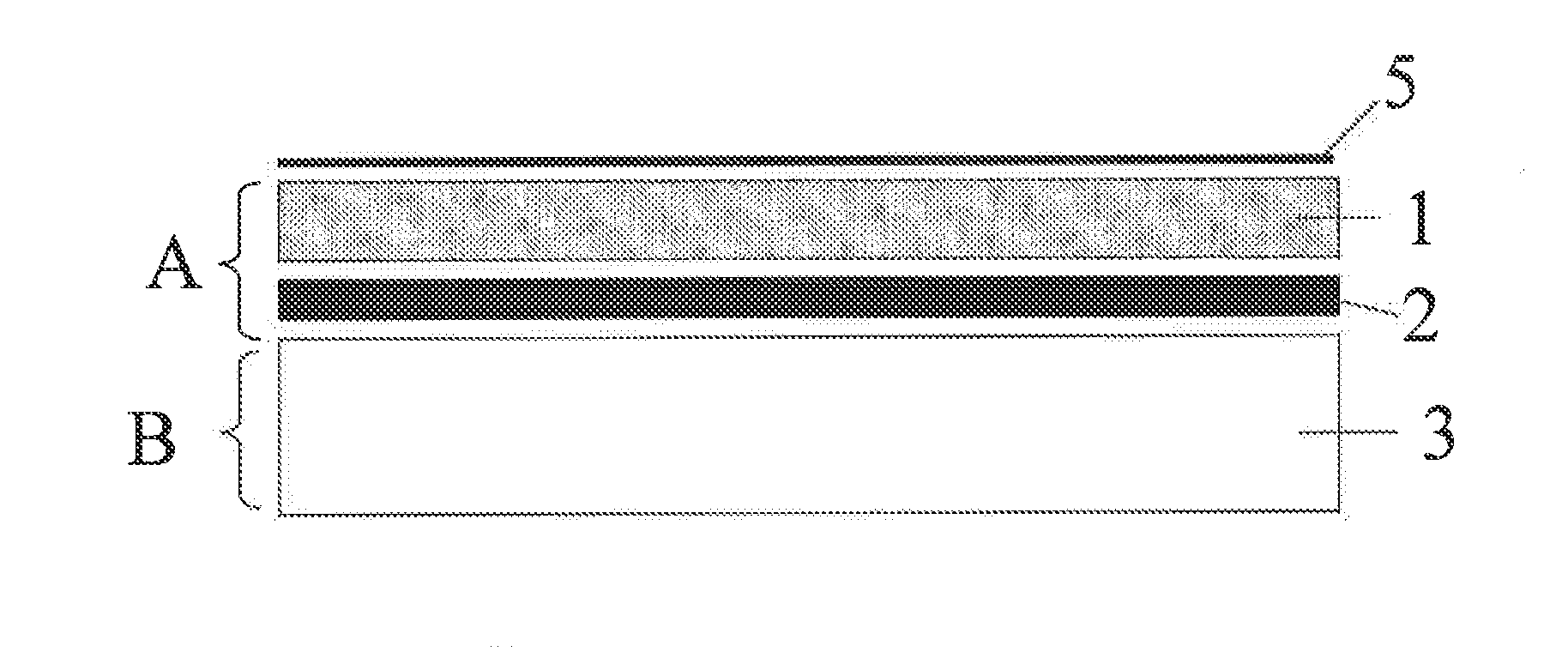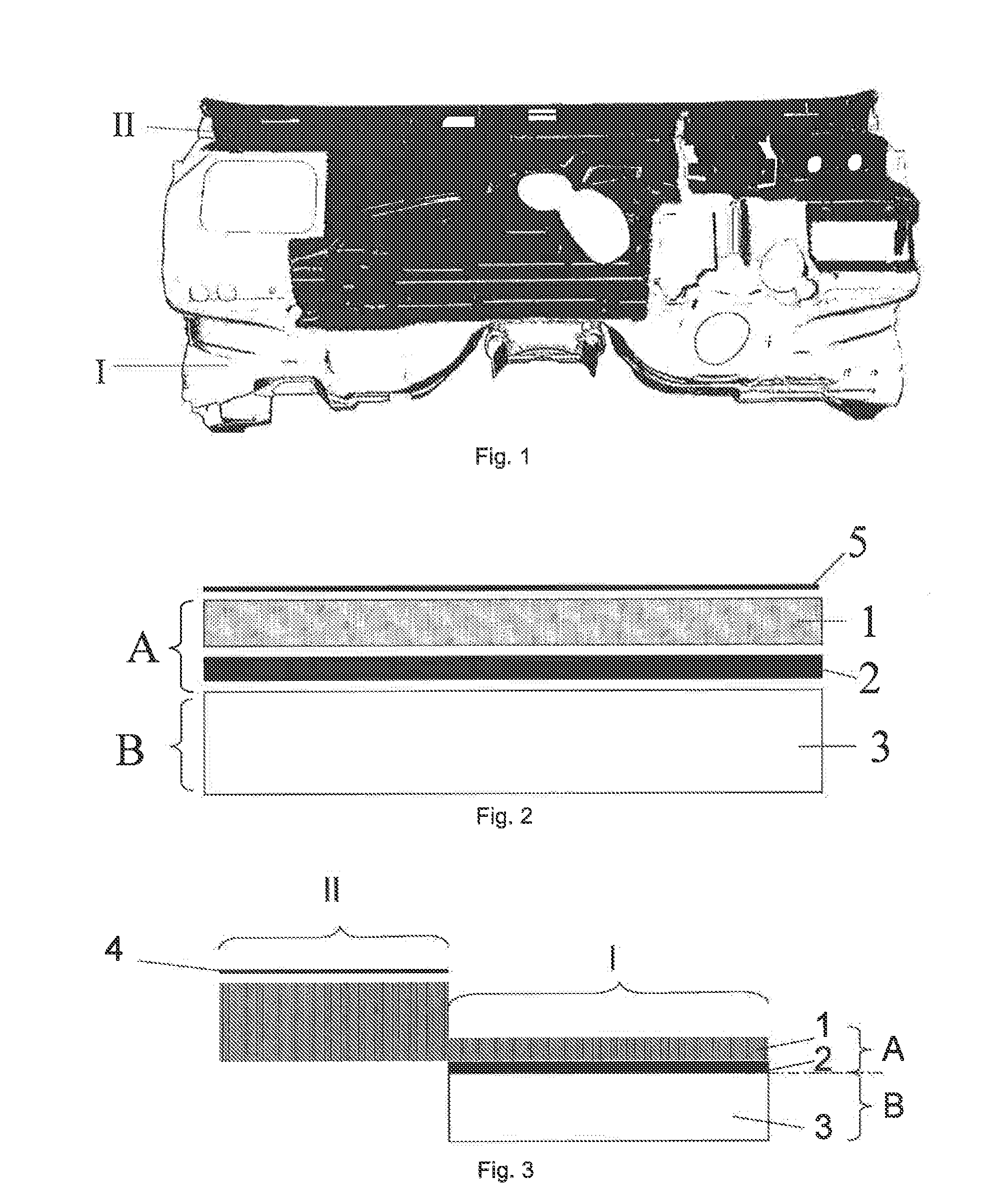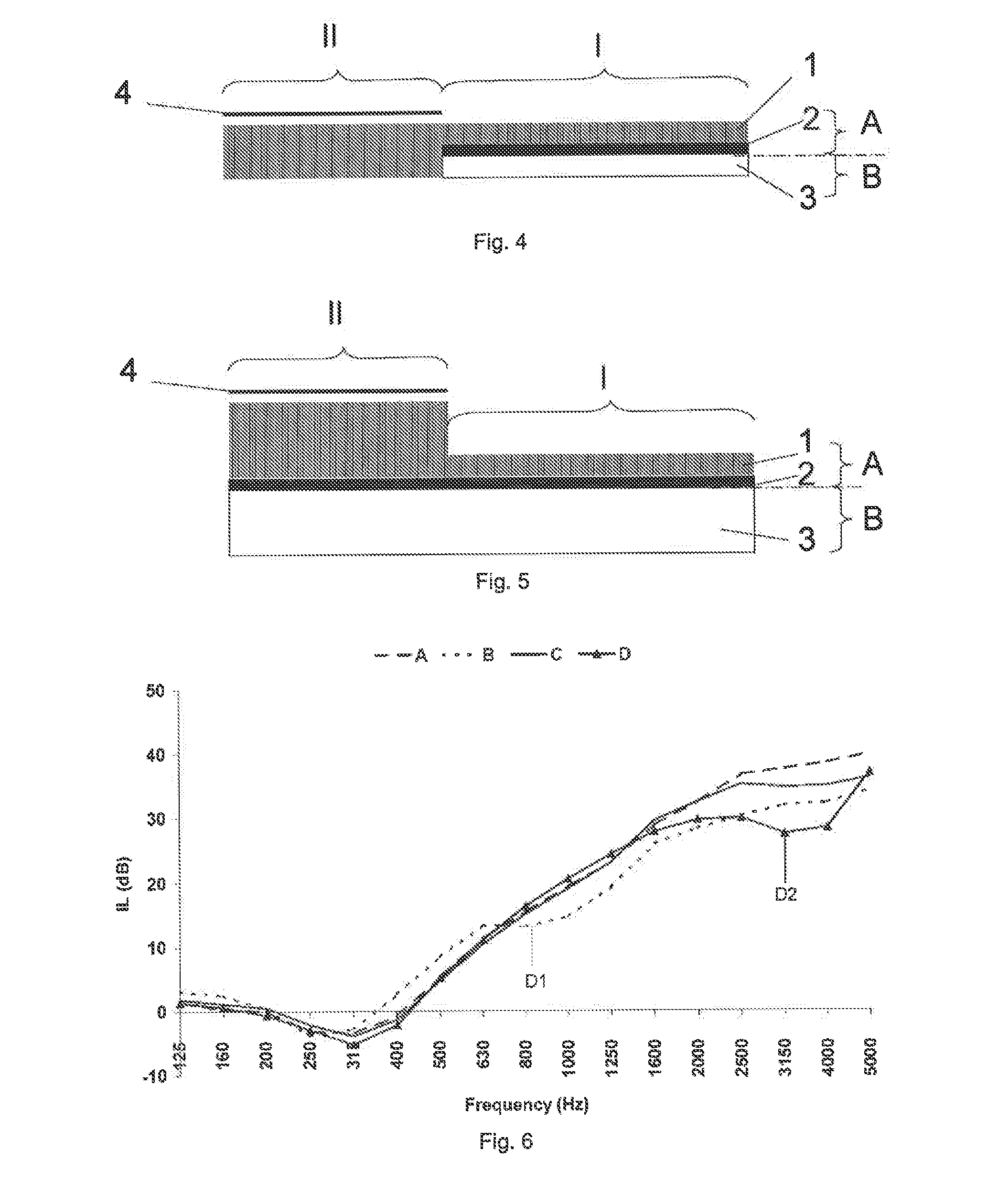Automotive noise attenuating trim part
a technology for automotives and trim parts, applied in the direction of sound producing devices, building components, instruments, etc., can solve the problems of loss, low noise insulation performance, and many textile fabrics, either thin and/or porous in structure, and achieve the effect of reducing weight and negative effect on insulation performan
- Summary
- Abstract
- Description
- Claims
- Application Information
AI Technical Summary
Benefits of technology
Problems solved by technology
Method used
Image
Examples
Embodiment Construction
[0093]FIG. 1 shows an example of an inner dash part with two separate areas having different acoustic functions, optimized to obtain a compromise of insulation and absorption. Generally, the lower part of an inner dash part is more suitable for insulation (1), because the noise paths coming from the engine and the front wheels through this lower area are more relevant, while the upper part of the dash (II) is more suitable for absorption, because some insulation is already provided by other elements of the car, for example the instrumentation panel. Between these areas, in areas where the packaging space is minimal or in heavily 3 dimensional shaped areas, it is normally not possible to identify the actual acoustical characteristics. For instance, it is not possible to identify acoustical characteristics due to either impairing of the decoupling layer or compression of a lofty layer that should function as an absorbing layer.
[0094]To achieve an overall better sound attenuation for a...
PUM
 Login to View More
Login to View More Abstract
Description
Claims
Application Information
 Login to View More
Login to View More - R&D
- Intellectual Property
- Life Sciences
- Materials
- Tech Scout
- Unparalleled Data Quality
- Higher Quality Content
- 60% Fewer Hallucinations
Browse by: Latest US Patents, China's latest patents, Technical Efficacy Thesaurus, Application Domain, Technology Topic, Popular Technical Reports.
© 2025 PatSnap. All rights reserved.Legal|Privacy policy|Modern Slavery Act Transparency Statement|Sitemap|About US| Contact US: help@patsnap.com



